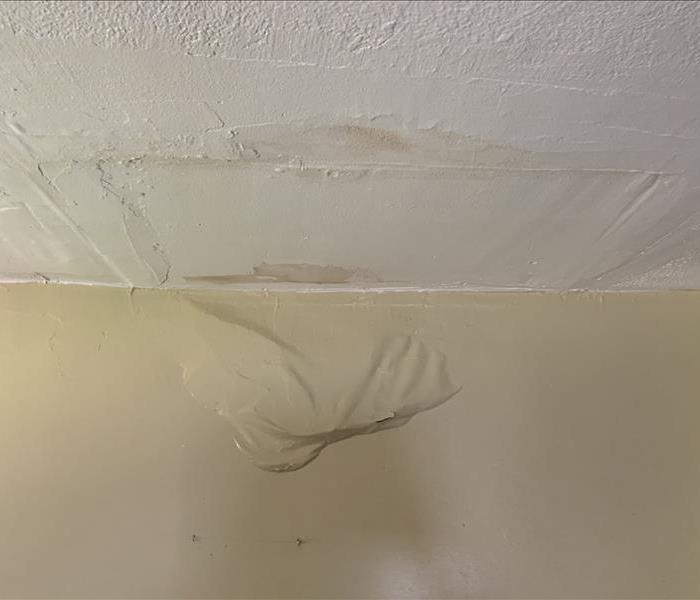Unseen Perils: The Threat of Slow Leaks in Residential Homes
5/20/2024 (Permalink)
 Certified water damage restoration specialists like SERVPRO® possess the expertise, experience, and equipment necessary to locate hidden leaks.
Certified water damage restoration specialists like SERVPRO® possess the expertise, experience, and equipment necessary to locate hidden leaks.
In the realm of household hazards, some of the most insidious threats are the ones we cannot readily see. Slow leaks, often lurking behind walls or beneath floors, pose a significant risk to residential properties, silently causing damage over time and compromising structural integrity. In this blog, we shed light on the hidden dangers of slow leaks and the importance of proactive detection and mitigation measures.
The Silent Menace:
Unlike sudden pipe bursts or catastrophic flooding, slow leaks operate stealthily, gradually weakening building materials and fostering conducive conditions for mold growth. Whether originating from plumbing fixtures, appliances, or hidden pipes, these leaks can persist undetected for weeks, months, or even years, wreaking havoc on homes and exacerbating issues with each passing day.
Structural Damage:
One of the most immediate consequences of slow leaks is structural damage. Prolonged exposure to moisture weakens wooden framework, drywall, and other building materials, leading to warping, buckling, and decay. Over time, compromised structural elements can compromise the stability and safety of the entire property, necessitating costly repairs and renovations.
Mold and Mildew Growth:
Where there is moisture, mold and mildew are sure to follow. Slow leaks create ideal breeding grounds for these fungal intruders, promoting their proliferation behind walls, under flooring, and in other hidden spaces. Left unchecked, mold and mildew can cause not only unsightly stains and odors but also pose significant health risks to occupants, triggering allergic reactions, respiratory issues, and other health problems.
Damage to Personal Property:
In addition to harming the structure of the home, slow leaks can also damage personal belongings and furnishings. Moisture-sensitive items like clothing, furniture, electronics, and documents are particularly vulnerable to water damage and mold growth, resulting in irreversible losses and emotional distress for homeowners.
High Water Bills:
Another telltale sign of a slow leak is a sudden increase in water bills. While the leak itself may go unnoticed, the corresponding spike in water usage can serve as an early warning sign of hidden plumbing issues. Monitoring water consumption and promptly investigating any anomalies can help homeowners identify and address leaks before they escalate into full-blown crises.
Prevention and Detection:
Preventing the consequences of slow leaks begins with proactive detection and mitigation efforts. Homeowners should routinely inspect plumbing fixtures, appliances, and visible pipes for signs of leaks or moisture accumulation. Installing water leak detection devices and smart monitoring systems can provide additional layers of protection, alerting homeowners to potential issues before they escalate.
Professional Intervention:
In cases where slow leaks have already caused damage, seeking professional restoration services is paramount. Certified water damage restoration specialists like SERVPRO possess the expertise, experience, and equipment necessary to locate hidden leaks, assess the extent of damage, and implement comprehensive mitigation and restoration solutions to restore affected properties to preloss condition.
In conclusion, while slow leaks may operate stealthily, their potential for causing significant damage to residential homes should not be underestimated. By remaining vigilant, proactive, and enlisting the support of trusted restoration professionals, homeowners can safeguard their properties against the unseen perils of slow leaks and enjoy peace of mind knowing that their homes are protected from harm.

 24/7 Emergency Service
24/7 Emergency Service